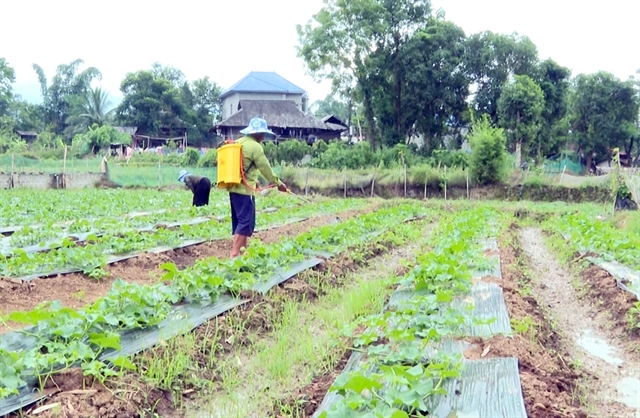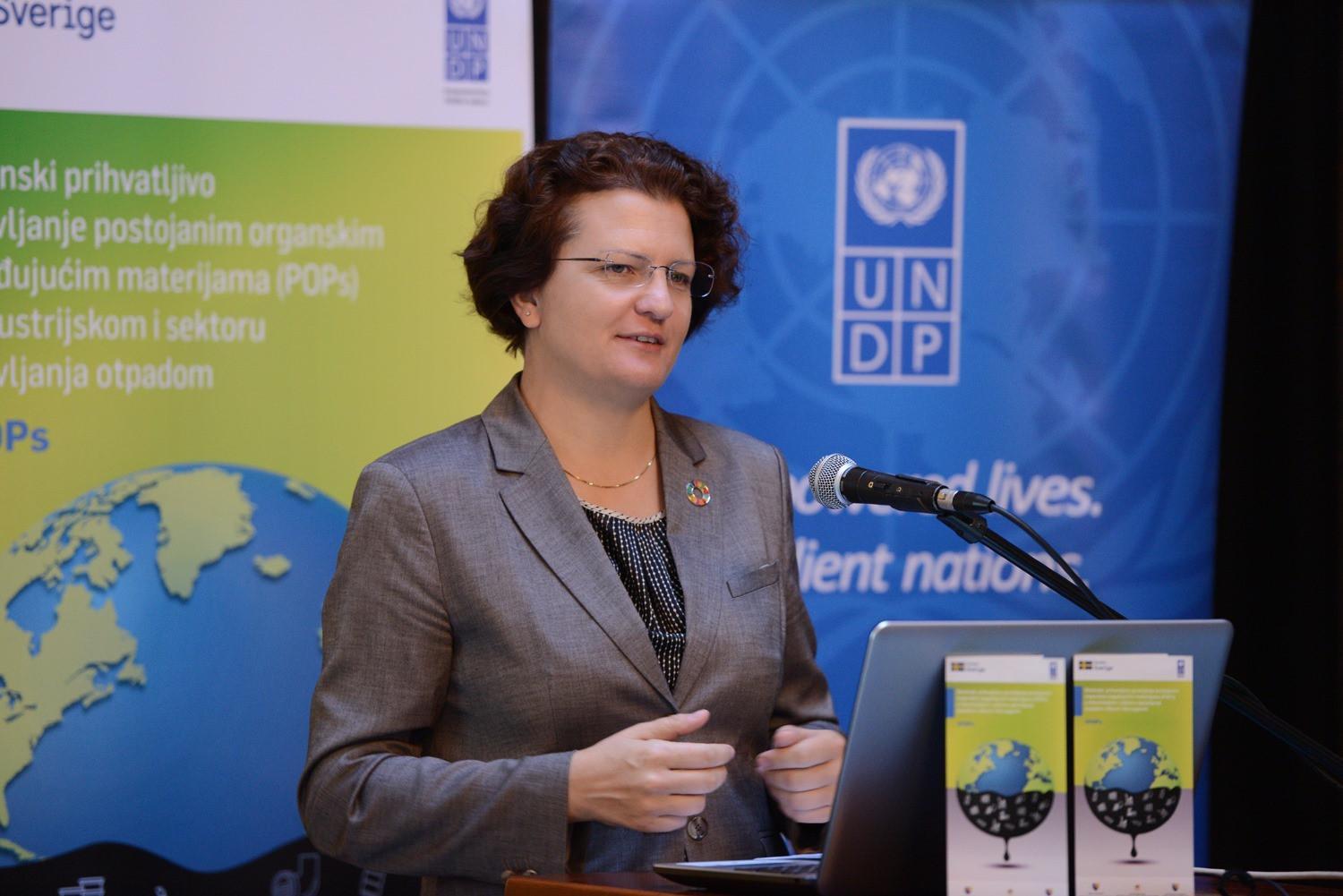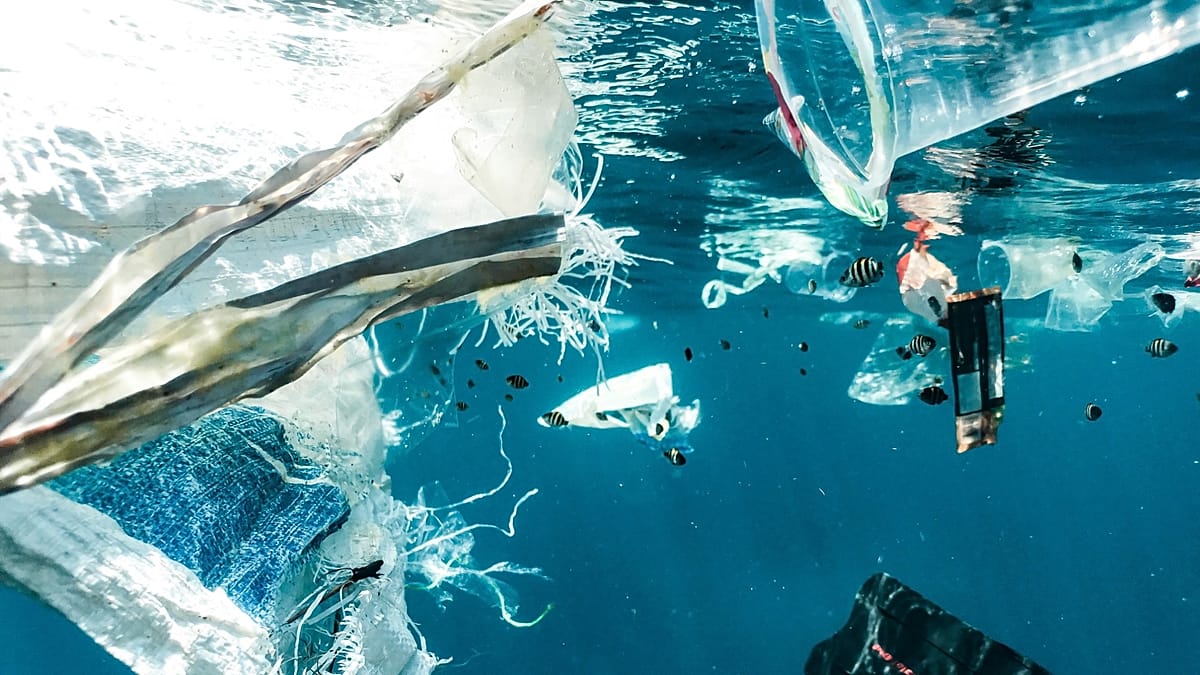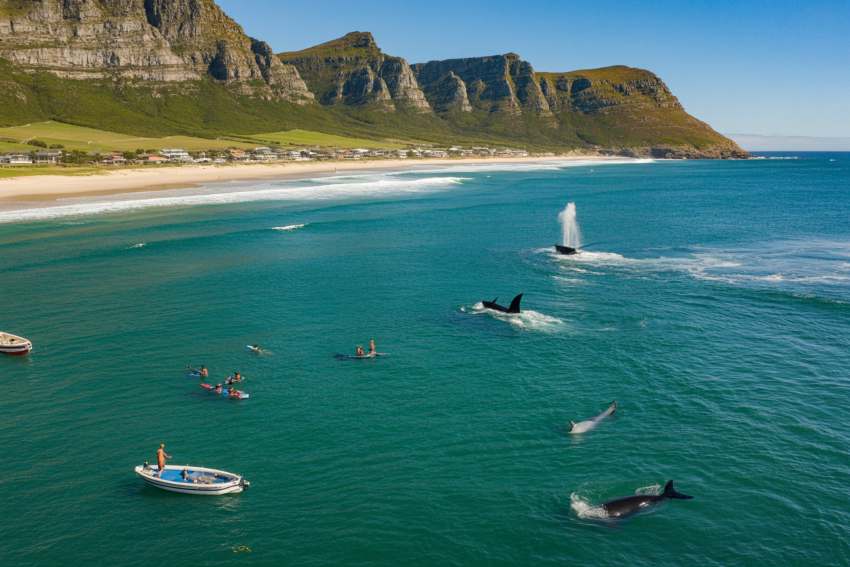The world in a tidepool – Stanford Doerr School of Sustainability

Report on the Hewatt-Sagarin Transect: A Long-Term Ecological Study Supporting Sustainable Development Goals
Introduction: A Legacy of Marine Monitoring
The Hewatt-Sagarin transect, a long-term ecological survey initiated in 1934 at Stanford’s Hopkins Marine Station, serves as a critical tool for monitoring coastal biodiversity. This multi-generational scientific endeavor provides invaluable data on marine ecosystems, directly contributing to the achievement of several United Nations Sustainable Development Goals (SDGs), most notably SDG 14 (Life Below Water) and SDG 13 (Climate Action). By documenting changes in marine species over decades, the project functions as a sentinel for climate change impacts and informs marine conservation strategies.
Advancing Scientific Research and Innovation for Marine Conservation
Historical Context and Methodological Refinement
Originating with Willis Hewatt’s graduate thesis, the survey has been maintained intermittently for nearly a century. Recognizing the challenges of long-term scientific continuity, contemporary project leads have focused on standardizing methodologies. Robin Elahi, a lecturer at Hopkins Marine Station, has refined survey protocols to ensure data consistency. This commitment to methodological precision enhances the reliability of the data used to track biodiversity changes, a key component of achieving targets under SDG 14, which calls for the conservation and sustainable use of marine resources.
Integration of Modern Technology in Support of SDG 9
The project exemplifies SDG 9 (Industry, Innovation, and Infrastructure) by integrating innovative technologies to enhance scientific research. In addition to traditional visual surveys, researchers now employ advanced techniques to gather more comprehensive data.
- Environmental DNA (eDNA): Postdoctoral scholar Meghan Shea has introduced eDNA sampling, which involves sequencing genetic material from seawater to identify species present in the habitat. This molecular tool complements visual observations and expands the capacity to detect a wider array of organisms.
- Drone Imagery: The use of drones provides a broader spatial perspective, allowing researchers to map the extent of habitats like mussel beds with greater accuracy.
These technological advancements strengthen the scientific infrastructure for monitoring marine health and biodiversity, aligning with the goal of upgrading scientific capabilities.
Direct Contributions to Global Sustainability Objectives
SDG 14: Life Below Water
The transect’s primary contribution is to SDG 14. The long-term dataset is fundamental to understanding and protecting marine and coastal ecosystems.
- Monitoring Biodiversity: The continuous repetition of the survey provides a unique record of species abundance and distribution, helping to detect changes and potential threats to marine life.
- Informing Conservation: Data from the transect can be used to investigate the ecological forces that shape biodiversity and to develop strategies to mitigate the impacts of environmental stressors.
- Building a Knowledge Base: The project contributes to a global library of marine genetic data, as highlighted by California’s investment in a DNA barcode library for intertidal biodiversity.
SDG 13: Climate Action
As noted by Professor Fiorenza Micheli, the transect serves as a “sentinel of change,” providing concrete evidence of the impacts of climate change on marine environments. The data collected helps document the effects of rising sea surface temperatures and ocean acidification on coastal species, strengthening the scientific knowledge base required to build resilience and adaptive capacity to climate-related hazards, a key target of SDG 13.
SDG 4: Quality Education
The Hewatt-Sagarin transect is a powerful educational platform, directly supporting SDG 4 (Quality Education). By involving undergraduate and graduate students in hands-on field research, the project provides invaluable experiential learning opportunities.
- It immerses students in natural history and scientific methodology.
- It inspires new scientific inquiries, as demonstrated by Meghan Shea’s PhD dissertation.
- It cultivates a new generation of scientists equipped to address complex environmental challenges, ensuring the continuation of vital research for global sustainability.
Conclusion: A Model for Integrated Ecological Research
The Hewatt-Sagarin transect is more than a historical dataset; it is a dynamic and evolving research platform that integrates traditional fieldwork with cutting-edge technology. Its multi-faceted contributions to monitoring marine biodiversity, tracking climate impacts, fostering scientific innovation, and educating future scientists make it a powerful example of how localized, long-term research can directly support the global agenda for sustainable development. The ongoing work ensures that this legacy of scientific inquiry will continue to inform efforts to achieve SDG 14, SDG 13, and other related goals for decades to come.
Analysis of the Article in Relation to Sustainable Development Goals
1. Which SDGs are addressed or connected to the issues highlighted in the article?
SDG 14: Life Below Water
- The article’s central theme is the long-term monitoring of marine biodiversity in the intertidal zone through the Hewatt-Sagarin transect. This research directly contributes to understanding and protecting marine and coastal ecosystems, which is the core objective of SDG 14.
SDG 13: Climate Action
- The research is explicitly framed within the context of climate change. The article states that the monitoring helps understand “climate change impacts on ocean temperatures, ecosystems, oxygen levels, and acidity.” The transect is described as a “sentinel of change,” providing early warnings and data on the effects of climate change on marine life.
SDG 4: Quality Education
- The article highlights the significant role of students in the research project. It mentions that faculty have “enlisted students to expand sampling” and that such studies “immerse them literally and figuratively in natural history.” The transect has also inspired advanced academic work, such as Meghan Shea’s PhD dissertation, demonstrating its value as an educational tool for the next generation of scientists.
SDG 9: Industry, Innovation, and Infrastructure
- The article discusses the evolution and improvement of scientific research methodologies. It details the shift from traditional visual surveys to incorporating advanced technologies like environmental DNA (eDNA) analysis and drone imagery. The mention of the California legislature’s “$9 million investment to build out a DNA barcode library” is a direct example of investing in scientific infrastructure to enhance research capabilities.
2. What specific targets under those SDGs can be identified based on the article’s content?
SDG 14: Life Below Water
-
Target 14.2: By 2020, sustainably manage and protect marine and coastal ecosystems to avoid significant adverse impacts, including by strengthening their resilience, and take action for their restoration in order to achieve healthy and productive oceans.
- The continuous, decades-long survey of the transect provides the essential data needed to understand long-term changes in a coastal ecosystem, which is a prerequisite for effective management and protection.
-
Target 14.a: Increase scientific knowledge, develop research capacity and transfer marine technology… in order to improve ocean health.
- The project is a clear example of increasing scientific knowledge through a long-term data series. It develops research capacity by training students and postdoctoral scholars like Meghan Shea. The adoption of eDNA analysis represents the development and application of new marine technology.
SDG 13: Climate Action
-
Target 13.3: Improve education, awareness-raising and human and institutional capacity on climate change mitigation, adaptation, impact reduction and early warning.
- The marine station’s role as a “sentinel of change” directly relates to providing early warnings on the impacts of climate change. The involvement of students and researchers builds human and institutional capacity to monitor and understand these impacts.
SDG 4: Quality Education
-
Target 4.7: By 2030, ensure that all learners acquire the knowledge and skills needed to promote sustainable development.
- The article describes how students get hands-on experience in marine biology and data collection (“immerse them literally and figuratively in natural history”), directly providing them with the knowledge and skills to contribute to environmental science and sustainability.
SDG 9: Industry, Innovation, and Infrastructure
-
Target 9.5: Enhance scientific research, upgrade the technological capabilities of industrial sectors in all countries… encouraging innovation.
- The work of Meghan Shea using environmental DNA to complement traditional visual surveys, and the subsequent investment by the California legislature in a DNA barcode library, exemplifies the enhancement of scientific research and the upgrading of technological capabilities in the field of biodiversity monitoring.
3. Are there any indicators mentioned or implied in the article that can be used to measure progress towards the identified targets?
Implied Indicators for SDG 14 (Life Below Water)
- Changes in species abundance and biodiversity: The primary activity described is conducting “a visual survey of the species and organisms living in specific areas” and estimating their abundance. This data serves as a direct measure of ecosystem health over time.
- Application of new monitoring technologies: The article details the use of “environmental DNA,” “drone imagery,” and underwater snorkeling to collect data. The adoption and integration of these advanced methods indicate progress in research capacity (Target 14.a).
Implied Indicators for SDG 13 (Climate Action)
- Continuity of long-term monitoring programs: The fact that the Hewatt-Sagarin transect has been maintained intermittently since 1934 and annually since 2015 is an indicator of institutional capacity to track climate change impacts (Target 13.3).
Implied Indicators for SDG 4 (Quality Education)
- Number of students participating in environmental research: The article states that survey leads “have enlisted students to expand sampling along the transect,” implying a continuous involvement of students in hands-on scientific work.
- Number of advanced degrees based on the research: Meghan Shea’s PhD dissertation, which was inspired by the transect, is a concrete example of the project’s contribution to higher education in sustainability.
Implied Indicators for SDG 9 (Industry, Innovation, and Infrastructure)
- Public and private investment in research infrastructure: The “$9 million investment” by the California legislature to create a DNA barcode library is a specific, quantifiable indicator of investment in scientific infrastructure to support innovation (Target 9.5).
- Development of new scientific methodologies: The article describes how researchers are “Exploring how environmental DNA sampling might extend what’s possible to uncover through conventional visual monitoring,” indicating active innovation in research methods.
4. Summary Table of SDGs, Targets, and Indicators
| SDGs | Targets | Indicators (Implied from the Article) |
|---|---|---|
| SDG 14: Life Below Water |
14.2: Protect marine and coastal ecosystems.
14.a: Increase scientific knowledge and research capacity. |
– Changes in species abundance and biodiversity over time. – Application of new monitoring technologies (e.g., eDNA, drone imagery). – Number of scientific publications/dissertations from the research. |
| SDG 13: Climate Action | 13.3: Improve education and institutional capacity on climate change impact reduction. | – Existence and continuity of long-term climate impact monitoring programs (the transect itself). |
| SDG 4: Quality Education | 4.7: Ensure learners acquire knowledge and skills for sustainable development. |
– Number of students participating in hands-on environmental research. – Number of advanced degrees (e.g., PhDs) inspired by the project. |
| SDG 9: Industry, Innovation, and Infrastructure | 9.5: Enhance scientific research and encourage innovation. |
– Investment in research infrastructure (e.g., the $9 million for a DNA library). – Adoption and development of new scientific methodologies (integrating eDNA with visual surveys). |
Source: sustainability.stanford.edu
What is Your Reaction?
 Like
0
Like
0
 Dislike
0
Dislike
0
 Love
0
Love
0
 Funny
0
Funny
0
 Angry
0
Angry
0
 Sad
0
Sad
0
 Wow
0
Wow
0












































































